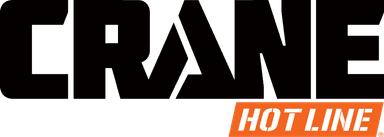ANSI A92.6 Update
 |
Jeff Stachowiak is the Director of Access Safety and Training for Sunbelt Rentals. He has conducted aerial work platform, scaffolding, and forklift training for more than 12 years. Based in Jacksonville , Fla. , he can be reached at jstachowiak@sunbeltrentals.com .
May 5, 2004 - Every year, a group of industry representatives-from manufacturer engineers to rental company representatives to government officials-meet in Las Vegas , Nev. , to discuss aerial work platform standards. It is nothing short of a miracle that this diverse group, the ANSI/SIA A92 Committee for Aerial Devices, is successful in the task at hand. When you consider that these standards must be reviewed and reissued every three years, you might think the job is impossible, but in reality they get the job done.
Most recently, the A92 Committee has been focusing on the A92.5 Boom-Supported Elevating Work Platforms standard. Some of the changes and additions to this section were previously hammered out in the A92.6 Self-Propelled Elevating Work Platforms (scissor lifts) section in 1999. These changes focus on training and the sale of equipment. Looking at the A92.6-1999 standard we might get some hints about what to expect in the coming revised version of the Boom-Supported standard.
![]()
Training
What is training? And who is responsible for it?
As stated in A92.6-1999 5.7: "The dealer shall offer appropriate training to facilitate owners, users, and operators to comply with requirements set forth in this standard regarding inspection, maintenance, use, application and operation of the aerial work platform." A key word here is "offer," versus the older A92.6 language, "provide."
Additionally "familiarization" will probably show up in the new A92.5 standard. Again, A92.6-1999 5.8 states: "Upon delivery by sales, lease, rental, or any form of use, the dealer shall have the responsibility with the person designated by the receiving entity for accepting the aerial platform to:
- Identify the weather resistant compartment (for manual storage).
- Confirm the manuals, as specified by the manufacturer, are on the aerial platform.
- Review control functions.
- Review safety devices specific to the model aerial platform being delivered."
![]()
Responsibilities upon sale
What is expected when an aerial work platform changes hands?
As with the scissor lift standard, we can anticipate similar changes to the boom lift standard. Currently, owners are required to tell manufacturers who they have sold the aerial platform to within 60 days of the sale. Additionally, the A92.6-1999 standard states that the dealer (owner) shall convey the operating, parts, repair, and maintenance manuals to the new owner, as well as provide a copy of the ANSI Manual of Responsibilities. The owner must also supply any recently completed annual inspection records; notify the manufacturer of the sale and provide full name and address of the purchaser; and familiarize the new owner's designated person with the equipment, as discussed above.
When using an aerial device, always read and refer to the manufacturer's manuals and the ANSI Manual of Responsibilities. For information on this or other ANSI A92 Subcommittees, contact Barris Evulich at bevulich@psnw.com or Dave Merrifield at dmerrifi@stjoelive.com .
![]()
ANSI A92 Subcommittees
ANSI/SIA A92.2-1990 Vehicle-Mounted Elevating and Rotating Aerial Devices
ANSI/SIA A92.3-1990 Manually Propelled Elevating Aerial Platforms
ANSI/SIA A92.5-1992 Boom Supported Elevating Work Platforms
ANSI/SIA A92.6-1999 Self-Propelled Elevating Work Platforms
ANSI/SIA A92.7-1990 Airline Ground Support Vehicle-Mounted Vertical Lift Devices
ANSI/SIA A92.8-1993 Vehicle-Mounted Bridge Inspection and Maintenance Devices
ANSI/SIA A92.9-1993 Mast-Climbing Work Platforms


